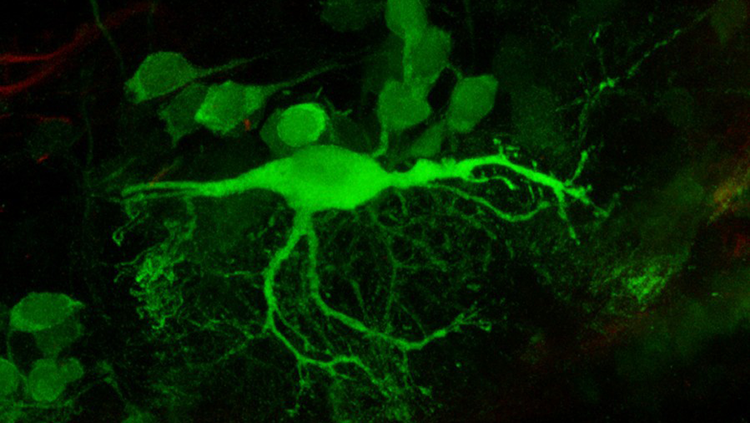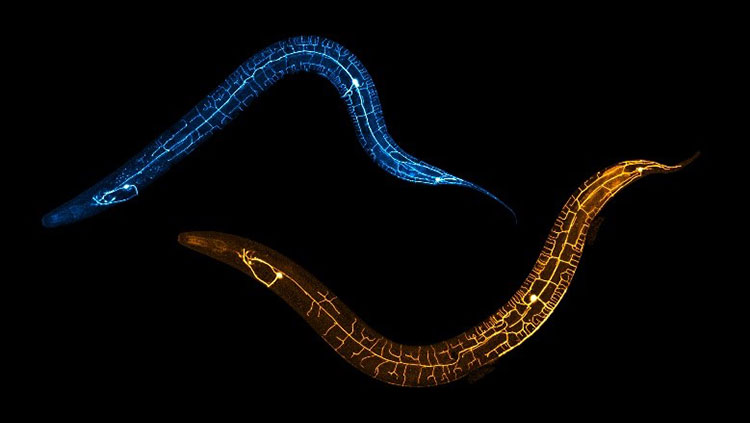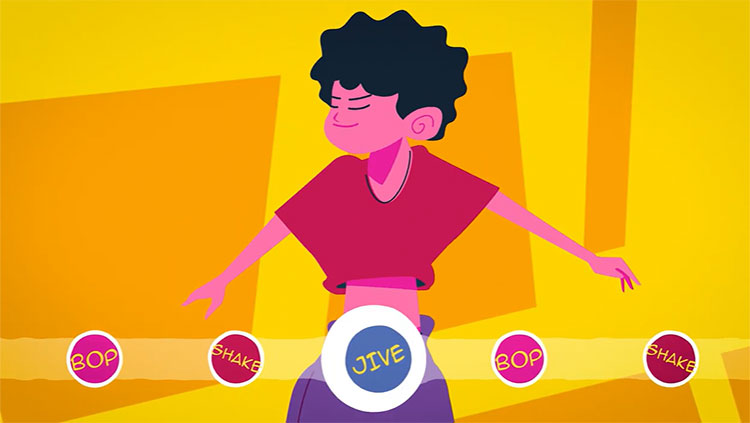The Motion Monitors
- Published2 Oct 2018
- Reviewed2 Oct 2018
- Author Charlie Wood
- Source BrainFacts/SfN

The motor area of your brain gives the orders your muscles execute, but those motion signals have to squeeze through your brainstem on their way down your spine and out into your body. That’s where this green cell comes in – a reticulospinal neuron, seen here in the hindbrain of a zebrafish. These nerve cells have many jobs, but one is to help start, maintain, and stop certain types of movement.
In lamprey eels, for example, researchers have found one such group of cells that act like the eel’s brakes: When they fire, the eel stops swimming. Triggering the cells with drugs also stops the eel mid-motion, and impairing their ability to talk with other neurons results in an eel that takes longer to slow down.
CONTENT PROVIDED BY
BrainFacts/SfN
References
Reticulospinal Tract. (n.d.). Retrieved September 20, 2018, from https://www.physio-pedia.com/Reticulospinal_Tract
Also In Movement
Trending
Popular articles on BrainFacts.org


















